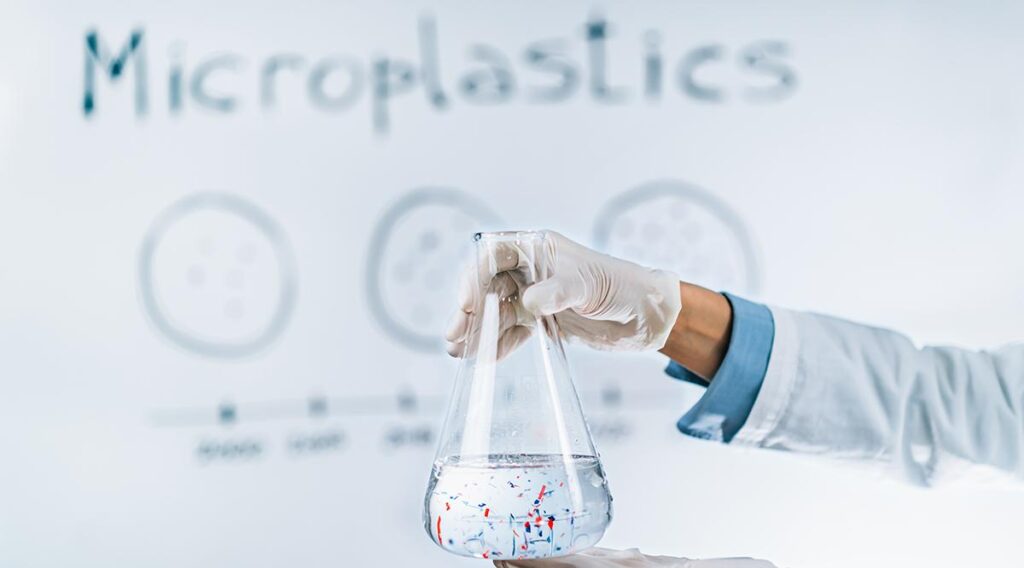
The truth to plastic exposure lies in this question! What if every piece of plastic you’ve ever touched—every bottle, bag, and container—never really disappeared? And what if, right now, invisible fragments of those plastics were lingering inside your body, shaping your health in ways you can’t see or feel…yet?
It sounds surreal, but plastic has a way of holding on. Long after we throw it away, it breaks down into microscopic particles that slip into our food, water, and even the air we breathe. You might wonder: how much of this unseen plastic is inside me? What are the lasting effects of carrying around particles from things we once held and forgot? Scientists are only beginning to uncover the answers, and they’re far more unsettling than you’d expect.
Could this common material, so integral to our daily lives, be secretly impacting our health in ways we’re only starting to understand? The hidden dangers are real—and what you don’t know might just surprise you.
The Real Threat of Plastic: Beyond Environmental Damage
When most people think of plastic pollution, they envision mountains of trash on beaches or floating islands of waste in the ocean. While these images are indeed alarming, the impact of plastic pollution runs far deeper than environmental damage. Plastic is entering our bodies through the food we eat, the water we drink, and even the air we breathe. Once inside us, these microscopic fragments—known as microplastics and nanoplastics—can cause harm in surprising and terrifying ways.
How Plastic Infiltrates Our Bodies
Plastic particles are everywhere: in bottled water, table salt, seafood, and even the rain. These microplastics enter our systems primarily through ingestion, inhalation, and skin contact. While it may sound harmless, these tiny fragments can wreak havoc on our bodies over time. Here are three main ways plastic infiltrates our systems:
- Through Food and Drink: A recent study revealed that humans ingest up to 5 grams of plastic each week. That’s about the size of a credit card. Most of this plastic comes from contaminated food and water, as well as food packaging that leaches chemicals into what we consume.
- Through the Air We Breathe: Plastic particles are present in the air, especially in urban areas. These airborne microplastics come from the breakdown of larger plastic products and even synthetic fibers released from clothes in washing machines.
- Through Everyday Contact: We come into contact with plastics through items we touch every day, from grocery bags to cosmetic products. Studies have shown that chemicals in plastic, like bisphenol A (BPA) and phthalates, can be absorbed through the skin and affect our hormonal balance.
The Health Risks of Microplastics: What Science Reveals
The health effects of microplastics are still being researched, but early findings are far from reassuring. Microplastics and the chemicals they contain can disrupt our endocrine systems, cause inflammation, and damage organs. Here are three major health risks associated with plastic exposure:
1. Hormone Disruption
Microplastics are laced with chemicals like BPA and phthalates, which are known endocrine disruptors. These chemicals mimic our natural hormones and can interfere with the body’s delicate hormonal balance. The consequences can include reproductive issues, developmental problems, and even certain cancers. Research has shown that BPA exposure is linked to lower fertility rates, while phthalates are associated with adverse effects on thyroid function and metabolism.
2. Respiratory Issues
Inhaling microplastics can lead to respiratory problems. These particles, small enough to lodge in lung tissue, can cause inflammation and irritate the respiratory system. Over time, exposure to microplastics may contribute to chronic conditions like asthma or chronic obstructive pulmonary disease (COPD). Researchers are particularly concerned about the impact of nanoplastics, which are small enough to enter the bloodstream and potentially affect other organs.
3. Increased Risk of Cancer
Certain chemicals in plastic, such as polyvinyl chloride (PVC) and styrene, are linked to a higher risk of cancer. PVC, commonly used in pipes and packaging, contains carcinogenic substances. Styrene, found in foam products, has been associated with an increased risk of leukemia and lymphoma. As we continue to expose ourselves to plastic daily, the cumulative effect on our health could be profound.
Three Ways to Reduce Your Plastic Exposure
Reducing your plastic exposure might feel daunting, but there are simple steps you can take that make a significant difference. Start by incorporating these actionable tips into your daily routine:
1. Choose Glass, Steel, and Natural Alternatives
One of the easiest ways to avoid plastic exposure is by choosing alternatives like glass or stainless steel for food storage, water bottles, and even cookware. These materials don’t leach harmful chemicals, making them safer choices for you and the environment. Next time you shop, opt for items packaged in paper, glass, or other natural materials.
Action Step: Swap out plastic water bottles for a reusable stainless steel or glass bottle. Store leftovers in glass containers instead of plastic ones, and consider using a cast iron or stainless steel skillet in place of nonstick cookware.
2. Buy Fresh, Avoid Packaged
A significant amount of plastic exposure comes from food packaging. By buying fresh, unpackaged foods—like fruits, vegetables, and grains from bulk bins—you can reduce the amount of plastic in your life and also improve your diet. Look for local farmers’ markets, which often have produce sold without any plastic packaging.
Action Step: Make a list of fresh foods you can buy unpackaged and start integrating them into your shopping routine. Bring your own cloth produce bags and jars for bulk items, and challenge yourself to see how much plastic packaging you can eliminate each week.
3. Filter Your Water
Tap water is often contaminated with microplastics, and bottled water can be even worse. A good water filter can significantly reduce your plastic intake from drinking water. Look for a filter that’s certified to remove microplastics, heavy metals, and other contaminants.
Action Step: Invest in a high-quality water filter for your home, and refill a stainless steel or glass bottle instead of relying on plastic bottles. Many filters are now designed to fit standard water pitchers or can be installed directly on your faucet.
Surprising Sources of Plastic: Where You Might Not Expect It
Reducing your plastic exposure isn’t always straightforward, especially when plastic is hidden in unexpected places. Here are some surprising sources of plastic that you may not be aware of:
- Tea Bags: Many tea bags contain plastic to help them hold their shape. When heated, they can release billions of microplastic particles into your tea. Opt for loose leaf tea instead.
- Clothing: Synthetic fabrics like polyester, nylon, and acrylic shed microplastics when washed. These particles end up in our water systems and eventually in our bodies. Choose natural fibers like cotton, linen, and wool when possible.
- Cosmetics and Personal Care Products: Some skincare products, such as exfoliators and toothpastes, contain microbeads—tiny plastic particles meant to scrub your skin. These beads are harmful to marine life and can end up in the food chain. Look for plastic-free alternatives with natural exfoliants.
How to Take Action Against Plastic Pollution
Reducing your personal plastic use is a great first step, but we also need broader action to address the plastic pollution crisis. Consider these ways to make a larger impact:
- Advocate for Plastic-Free Initiatives
Many cities are starting to ban single-use plastics. You can support these initiatives by writing to local representatives, signing petitions, or volunteering with environmental organizations. Community involvement can bring about change and reduce plastic use on a larger scale. - Support Businesses with Eco-Friendly Packaging
More companies are transitioning to sustainable packaging. Show your support by choosing products from companies that prioritize eco-friendly materials. By voting with your wallet, you’re encouraging more brands to go green.
Below is a list of eco-friendly companies and organizations advocating for sustainable practices and promoting plastic-free products. These resources can help readers make informed choices that support the environment
- Plastic Pollution Coalition
https://www.plasticpollutioncoalition.org
A global alliance working to eliminate plastic pollution and its toxic impacts on people, animals, and the environment. - 4ocean
https://www.4ocean.com
An organization that sells bracelets made from recycled materials, using profits to fund ocean cleanup efforts and promote plastic-free alternatives. - EarthHero
https://www.earthhero.com
An eco-friendly online marketplace offering a variety of sustainable, plastic-free products across categories like home goods, personal care, and apparel. - Package Free Shop
https://www.packagefreeshop.com
This shop focuses on reducing waste by offering sustainable, plastic-free alternatives to everyday products. - EcoRoots
https://ecoroots.us
A zero-waste, plastic-free shop that sells eco-friendly, sustainable products for home, beauty, and personal care. - Lush Cosmetics
https://www.lushusa.com
Known for their “Naked” products, Lush offers a range of personal care items without packaging, minimizing plastic waste. - Ethique
https://ethiqueworld.com
This brand creates beauty and personal care products that are solid, plastic-free, and waste-free. - Life Without Plastic
https://www.lifewithoutplastic.com
Offers a wide variety of reusable, sustainable, and plastic-free alternatives to help you reduce plastic in daily life. - Terracycle
https://www.terracycle.com
An innovative recycling company that collects and repurposes hard-to-recycle waste, helping consumers and businesses reduce their plastic footprint. - Greenpeace
https://www.greenpeace.org
An environmental organization that advocates for sustainable practices, including efforts to reduce plastic pollution on a global scale.
Educate Yourself and Others
Knowledge is power. The more you understand the impacts of plastic, the more you can educate those around you. Share resources, articles, and documentaries with friends and family to raise awareness and inspire change.
Take Charge of Your Health and Our Planet
At Holy Herbology, we believe that knowledge is power, and with that power comes the responsibility to make choices that benefit both our health and our planet. The overwhelming presence of plastic in our daily lives may seem inevitable, but every action—no matter how small—makes a difference.
Scientific research continues to expose the long-term dangers associated with plastic exposure. According to a 2019 study published in Environmental Science & Technology, the average person consumes between 39,000 to 52,000 microplastic particles each year, with the number even higher for those who consume bottled water regularly. Dr. Sherri Mason, a renowned researcher on plastic pollution, warns that “plastics bring with them a complex chemical mix that could affect our immune system, endocrine function, and even our DNA over time.”
The long-term dangers of plastic extend beyond individual health concerns. Plastic pollution is now recognized as a global crisis by organizations such as the World Health Organization (WHO), which has raised concerns over microplastics accumulating in our food chain. These particles, scientists warn, could have repercussions that we are only beginning to understand. A 2021 report from the United Nations Environment Programme describes plastic as “a ticking time bomb” for public health and ecosystems, calling for immediate action to mitigate the potential disaster.
Our goal at Holy Herbology is to equip you with the tools to make informed decisions. While eliminating all plastic from your life may not be practical, reducing your exposure, advocating for sustainable changes, and choosing alternatives can contribute to a larger movement toward health and sustainability. Remember, the small choices you make today can shape a healthier, more harmonious world tomorrow.
Are you ready to take action? Join us on this journey of discovery, healing, and empowerment. Together, let’s choose a path that protects not only our bodies but also our planet. As we always say, “Knowledge is God.” Let’s use that knowledge to lead healthier, more meaningful lives, free from the hidden dangers of plastic.
